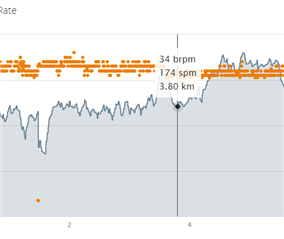GREAT new feature in the new 945: BREATH FREQUENCY. It is useful to combine in the analysis with the HR. suggestion Garmin team: At the moment I see it is only available the current breath freqency but not the LAP breath frequency or other levels like this. what about to insert as an improvements?


